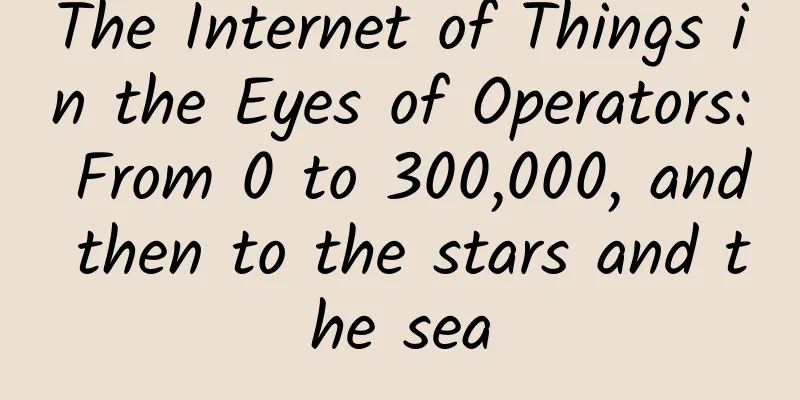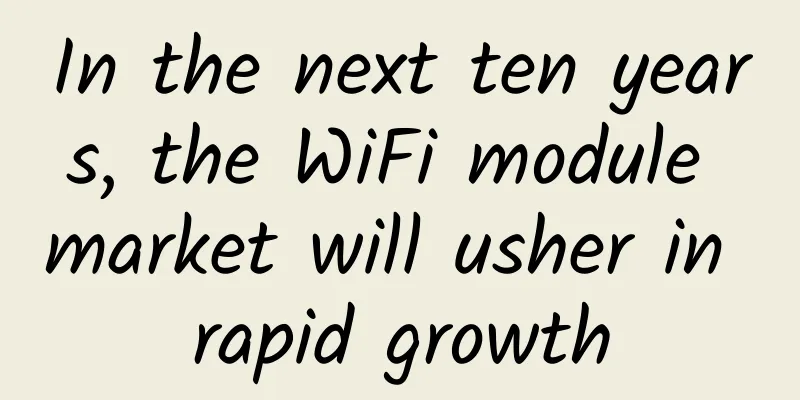The Internet of Things in the Eyes of Operators: From 0 to 300,000, and then to the stars and the sea

|
In the forecast of the Internet of Things with trillions of output value and tens of billions of connections, 300,000 is a small number. However, from the meager inventory at the beginning of last year to the current 300,000 inventory, from a dozen contracted parties to more than 160 partners in 24 scenarios, we are fortunate to witness and participate in the process of a product from 0 to 1, and witness the process of the Internet of Things silently changing the product structure of operators, guiding the development ideas of enterprises, and subtly affecting the life trajectory of ordinary people.
For most non-industry insiders, the views on the Internet of Things are generally extreme: either they think it is high-end and will change the world and subvert life in a minute; or they think it is very low-end and it is just a cheap network card, and the computer mall will sell tens of thousands of them in a minute. Extreme understanding means information asymmetry. We are delighted with the explosive development of the Internet of Things, but we are also constantly correcting the direction of development. Looking back at the development in just two years, and looking up at the sky full of stars and the sea of stars, I dare to guess what the future of the operator Internet of Things may look like? 1. From pipelines to ICT projects In the past two years, operators have paid more attention to scale and have been under tremendous pressure to seize the market and gain a foothold. There are two reasons for this: 1. Brand-new product forms and market environment, cross the river by feeling the stones. In the past, mobile phone card channels used the price difference of data traffic as an entry point, which seemed to have achieved some success, but was eventually gradually understood and digested by the market and no longer had any influence. However, the top manufacturers in different industries have more say in the competition among the three operators' channels. 2. Conflict between long-term scale and short-term income. I remember Ren Zhengfei once said that those who can handle long-term and short-term interests well are generals with strategic thinking. For the grassroots channels of operators, the revenue of IoT is small, which has little impact on over-collection and wages. Although the incentives of IoT itself are higher than the average level of traditional business, it is difficult to fulfill them in time due to the long cycle of IoT projects. Companies in different provinces and cities have different levels of focus when balancing resources and performance, resulting in uneven development. If IoT people have to do other work, it is naturally difficult to provide support. Faced with such a situation, I think we need to sort out the positioning of the Internet of Things from the bottom-up understanding: the Internet of Things business can be the entrance to the customer data channel, or the entrance to the operator's ICT project. Now, many business opportunities reported by operators' government and enterprise channels or customer acquisition channels were initially just IoT pipeline needs. If we bring the idea of doing projects to find customers, bring the technical support team to provide "IoT + cloud/SAAS platform/bandwidth/mobile group" solutions, and coordinate the corresponding solution providers to provide customers with a 1+1=1.5 business model, the customer acceptance will be very high. This not only guarantees the business volume of the Internet of Things, but more importantly, it increases the stickiness of cooperation, income, and the right to speak for the project. Of course, this requires the sensitivity of the IoT team members to business opportunities and the skilled operation of their own resources, and requires great support from the company's back-end technical team and front-end marketing team. 2. From ICT projects to standardized products If we can cooperate as an ICT project, the next stage is to make standardized products. Operators have done a lot of this before, such as Yunjing (smart rearview mirror), Lushang (smart OBD) products, smart ETC, etc., which have been packaged and applied in many provinces and cities. The business model is basically that customers deposit in advance to get products, operators promote channels, and manufacturers share packaging, which has a certain effect. However, due to the narrow product targets and strong channel dependence, there is still no explosive product that shakes the market. In fact, the narrow product target is precisely the entrance to the blue ocean, because the market demand is more clear and there is no mature integrated solution. Taking industrial routing as an example, many chain enterprises and banks have strong demand, and their main requirements are: 1. Real-time data control to obtain operator-level wireless communication guarantee; 2. Obtain solutions for store information collection, data analysis, and line backup; 3. Short construction period and can be put online as soon as possible; 4. Obtain comprehensive service solutions for equipment + traffic packaging provided by operators. Operators are the most suitable integrators for such demands. Faced with the chain industry with thousands of stores, it is timely to package specialized "hardware + platform + pipeline" IoT products. Similarly, I believe that more standardized scenarios will be presented one after another. 3. From standardized products to source cooperation From tariff competition to platform capability competition, the development of 2/3/4G IoT pipelines is already very mature, so the source cooperation mentioned here is more about NB. Since China Telecom announced full commercial use in June 2017, many smart city companies have invested a lot of R&D resources to follow up, whether it is the product transformation of water and gas meter centralized reading, or the evolution of emerging products such as NB access control and NB smart manhole covers, seizing the source of the market is the most important work to seize scale. China Mobile's NB is also developing rapidly, and the promotion is very powerful. But is the inertia of its development thinking of the huge volume of the 2G market necessarily reasonable? For example, many mobile NBs are bundled with China Mobile IoT modules. Although concentrating resources can reduce costs, from one perspective, it abandons the market capabilities of many mature module manufacturers. Using closed products to open markets is inappropriate, at least from the underlying logic. In short, integrating industry chain partners and finding partners according to market demand is the way to go in the future. |
>>: Detailed explanation of 5G communication: current status of 5G technology and future trends
Recommend
AlphaVPS: 1TB large hard drive VPS monthly payment starts from 5 euros, AMD EYPC+NVMe series monthly payment starts from 3.99 euros
AlphaVPS is a foreign hosting company founded in ...
How can enterprises fully leverage the potential of private 5G networks?
It may take some time for 5G to become the most a...
IPv4 and IPv6: Is the Internet Facing a Split?
The Internet is facing a technological split, and...
Connecting the Next Billion: 5G and Satellite
5G will revolutionize the Internet of Things due ...
Make your customers want you to be theirs with Riverbed Digital Experience Management
[51CTO.com original article] If you download a mo...
5G spectrum competition is "fighting" and deployment is surging
Recently, T-Mobile urged the FCC to complete the ...
Tudcloud: Hong Kong VPS with 70% discount for the first month starting at $2.7, with options for high bandwidth or unlimited traffic
Tudcloud has released this month's promotion....
Relay2 launches edge computing cloud solution to reshape the innovative value of networks and services
[51CTO.com original article] With the rapid devel...
Why are iOS and Android game data not interoperable? The truth is revealed
One day you get tired of it and want to switch to...
2018 Yunnan-Huawei Software Industry Summit was held on December 20
The 2018 Yunnan-Huawei Software Industry Summit w...
[6.18] UFOVPS 20% off, top up 200 yuan and get 10 yuan, US CN2/Japan CN2 GIA/Hong Kong CN2 GIA optional
UFOVPS launched this year's 618 discount prom...
Review of China Unicom in 2020: Being “down-to-earth” in the “hyper-realistic” development of 5G, and moving forward with firm “mixed reform”
As a technology that can rewrite the rules of the...
4 major roles of the network in enterprise digital transformation
Currently, digital transformation is described as...
Opportunity or chicken ribs? eMTC should not follow the NB-IoT price war
[[255921]] Recently, the official website of the ...









